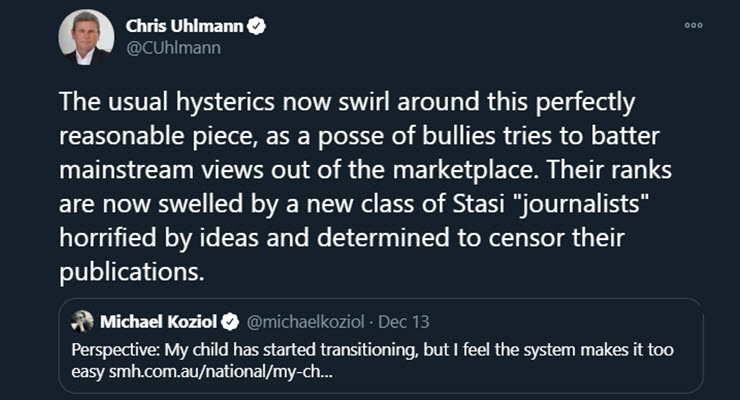The best journalism of 2020 was created by those who combined social media nous and wanting to inform — not berate — their audience.
The dispiriting battle between traditional media opinionistas and the very online Twitterati has rendered much of 2020’s public debate ugly and destructive.
But there are encouraging signs that the conflict is ending with a better journalistic opinion remade by the gift of social media.
It’s been a hard slog.
A certain school of traditional media disdained the “social” offering of the media platforms, of the interaction and opportunity for discussion, of the potential for the social capital — trust — needed by all media.
Some have seen only the hot takes, argumentative contrarianism and punch-down trolling. Worse, too many journalists have thought: “I can do that.” And so 2020 seems to be ending as Wikipedia founder Jimmy Wales tweeted at the weekend with “significant overlap between the professions of ‘opinion columnist’ and ‘Twitter troll’ ”.
Sure the tools of the troll are great if you’re trying to build controversy. And true, too, that controversy draws attention. But is that the attention journalism needs when the media’s future relies on engaged, rusted-on audiences?
Maybe it is if your business model is to monetise outrage by feeding the grumpy old man demographic (hello, Herald Sun!).






But journalism needs a business model that sells news and information direct to readers with analysis and context that builds trust.
This week the war bubbled up again after Nine’s mastheads published an anonymous parental hot take on transgender children. It set social media alight with a head-shaking WTF response, including from plenty of Nine’s journalists. (The Age removed the article but it’s still on the SMH site.)
Traditionalists responded — as they have all year — with the cancel culture card. Nine’s Chris Uhlmann pumped up the rhetoric-o-matic with “usual hysterics”, “a posse of bullies” and “Stasi ‘journalists’ ”.
Just another day in the culture wars.
But take a step back. It seems more like this attitude (outside News Corp at least) has become the outlier over just the past 12 months.
Social media and journalistic opinion are being increasingly integrated as the agora of debate. Journalists have to sacrifice the monopoly of access to opinion that industrial-scale printing gave them. (Although too many still refuse to accept those days are gone.)
The better journalists are finding a path that meshes the amplification that traditional media brings with the serendipity of discovery that social media offers. The price of admission to this new world? Accepting that the audience gets to talk back and, if journalists want the audience, they must be prepared to listen.
As with all 2020 trends, it’s been hurried on by COVID-19. Through the pandemic, the traditional approach to opinion saw Australia’s media editors encourage well-crafted contrarian takes challenging isolation, lockdowns and hard borders. Turns out these takes were not just wrong, not just (as the US experience demonstrates) profoundly dangerous. They served no purpose for the audience.
No surprise. In a life-threatening pandemic readers, viewers, listeners want information they can rely on. Forced to choose between institutions of government and public health and institutions of media, the public opted for government — despite all the spluttering about “Dictator Dan” and Stockholm syndrome and commentary on the danger of Twitter trolls and bullies.
Social media was better optimised for the crisis. The experts were already there. Once little-known epidemiologists, public health specialists, historians and data scientists who’d been puddling along on Twitter or Instagram talking largely to each other were suddenly must-follows for journalists.
The contemporaneous Black Lives Matter revolt similarly forced a recognition that the opinions fed by the lived experiences of disadvantaged groups were better understood when read directly through social media rather than mediated through traditional media.
No surprise then that the best journalism about the big moments of 2020 came out of a process that integrated the expertise and experience from social media with the storytelling amplification of the writer.
The best opinions were those that lit up that journalism with the moral clarity 2020 has demanded — and that 2021 will need.




48 hours only: Save up to 50% + get 2 months free
This extraordinary year is almost at an end. But we know that time waits for no one, and we won’t either. This is the time to get on board with Crikey.
For a limited time only, choose what you pay for a year of Crikey, and, if you subscribe in the next 48 hours, you’ll get an additional two months free added to your membership.
Save up to 50% or dig deeper so we can dig deeper.
See you in 2021.
Peter Fray
Editor-in-chief of Crikey








